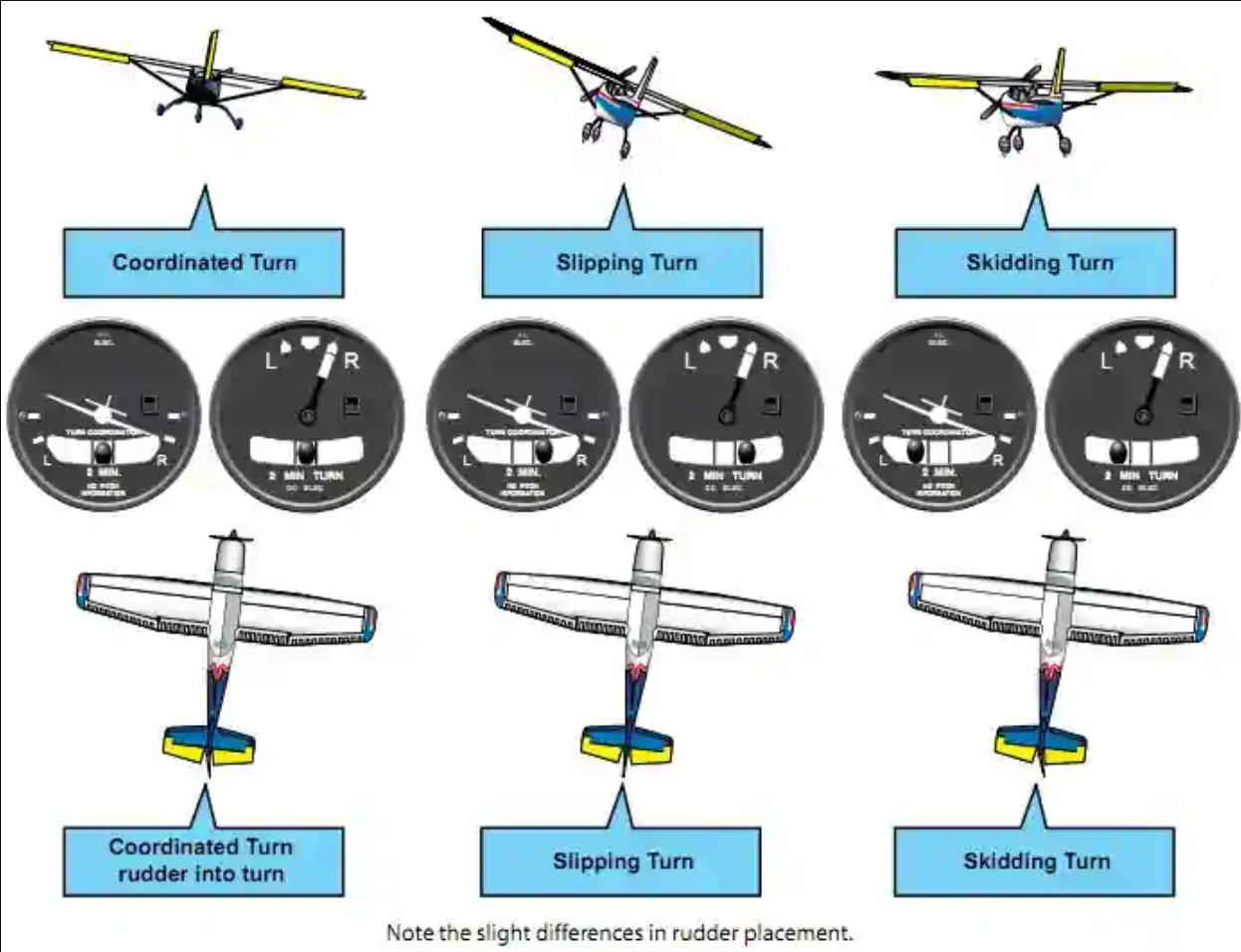Banked turn

A banked turn is a fundamental maneuver in aeronautics in which an aircraft changes its direction of flight by rolling, or banking, its wings. This banking creates a horizontal component of lift that generates the force necessary to turn the aircraft.
The Mechanics
Roll/Bank: The pilot uses ailerons (or spoilers) to roll the aircraft, causing it to lean into the turn.
Horizontal Lift: The angled wings in a banked turn generate a force that's not just upward (lifting) but also sideways.
Turning Force: This sideways component of lift is what creates the force needed to make the aircraft turn in a curved path.
Rudder Coordination: The rudder is used to maintain coordination, preventing the aircraft from slipping or yawing sideways during the turn.
Key Aspects
Angle of Bank: The degree to which the aircraft is tilted is called the angle of bank.
Load Factor: Banked turns increase the load factor, which is the force the aircraft experiences due to the combination of gravity and the turning force. This can be significant in steep turns.
Turn Radius: The radius of the turn is related to the speed of the aircraft and the angle of bank. Steeper bank angles result in tighter turns.
Turning Rate: The rate at which an aircraft turns is also influenced by the bank angle and speed.
Importance
Changing Direction: Banked turns are essential for changing direction in flight, such as making navigation turns or performing maneuvers.
Controlled Flight: Pilots use banked turns to navigate and maneuver in a controlled and safe manner.
Flight Training: Banking turns are a fundamental skill taught to pilots during flight training.
- Banked turn
- Aircraft maneuvers
- Flight dynamics
- Flight control surfaces
- Roll (aeronautics)
- Pitch (aeronautics)
- Yaw (aeronautics)
- Lift (force)
- Turn (aeronautics)
- Angle of attack
- Load factor (aeronautics)
- Aerodynamic forces
- Aviation safety
- Aircraft control
- Flight training
- Aviation terminology
- Aeronautics
- Air navigation
- Aircraft handling
- Controlled flight
- Air traffic maneuvers
- General aviation
- Airplane performance
- Stability and control
- Flight envelope
- Aircraft design
- Avionics
- Aviation Safety X
- ASXWiki
- ASX flight operations
- Fixed-wing aircraft
